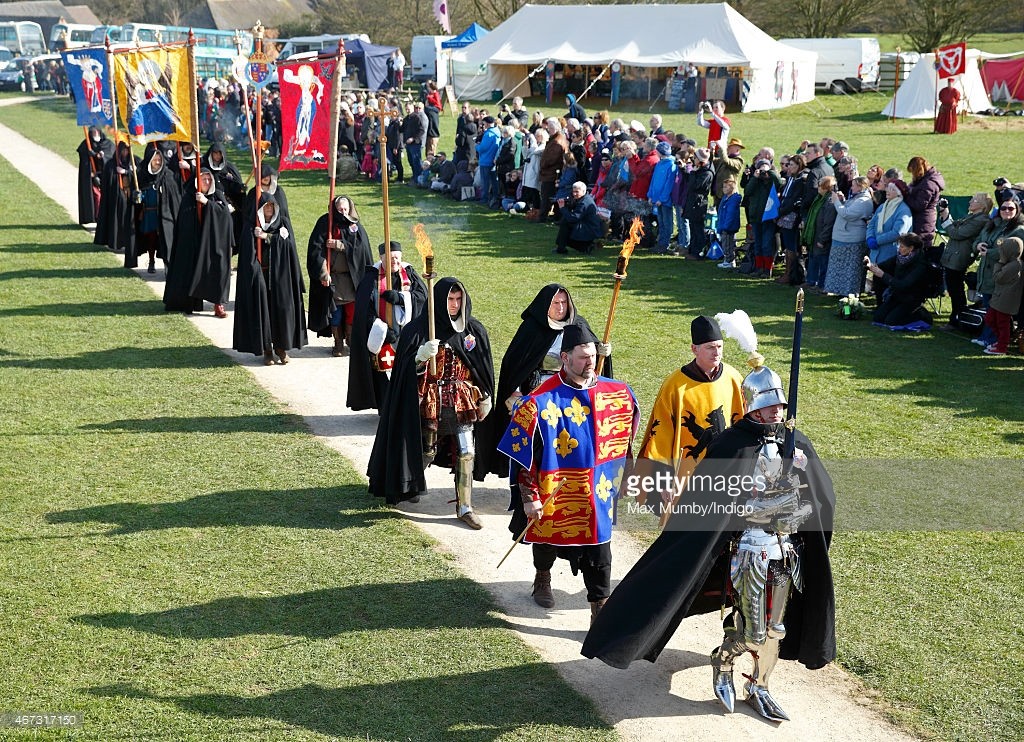‘Never has so much spirit or greater virtue reigned in such a small body’ — Archdeacon of Lothian, who came to Richard’s court with an embassy from James III of Scotland in 1484
‘King Richard was an ypocryte and a crochebake and beried in a dike like a dogge’ — Earl of Northumberland, testimony from the Municipal Records of the City of York, 1491
Many know the story of England’s King Richard III — a complex, much-maligned figure whose reign was marked by intrigue and violence. Many know him from William Shakespeare’s celebrated play, which portrayed the monarch as a brilliant comic villain.
But Alex Kay, a mechanical engineer at Seagate’s Havant, U.K. campus, knows King Richard’s story better than most. A respected amateur medieval history expert and historical re-enactor, Kay was recently honored to lead the official procession to a memorial service following the discovery of the king’s long-lost remains.
“It has been quite an experience to be part of this history in the making,” Kay said. “It is certainly something I will never forget. After all, it’s not every day you are asked to help bury a king!”
Watch our slide show to see how much craftsmanship went into Alex Kay’s suit of armor:
Seagate Engineer in Medieval Armor
 Kay prepared for his role for six months, working with armorers in the U.K. and Europe to create a full set of period-correct steel armor based on museum pieces. Each piece was hand beaten, planished into shape, heat treated and polished. Kay himself made about 40 percent of the sub-assemblies, and did the integration of the many pieces into a complete working 15th-century suit of armor appropriate for a high-status individual. He also made the sword and scabbard.
Kay prepared for his role for six months, working with armorers in the U.K. and Europe to create a full set of period-correct steel armor based on museum pieces. Each piece was hand beaten, planished into shape, heat treated and polished. Kay himself made about 40 percent of the sub-assemblies, and did the integration of the many pieces into a complete working 15th-century suit of armor appropriate for a high-status individual. He also made the sword and scabbard.
A King’s Story
King Richard III figures prominently in English history. The last English king to die in battle, Richard’s brief reign marked a turbulent period for the country — beginning with his controversial seizing of the throne from 12-year-old Edward V and ending with the ascension of a new royal family upon his death at the hands of rebellious nobles.
Lost and Rediscovered
Following his death in the Battle of Bosworth Field in 1485, King Richard was buried hastily at an area friary. The burial location was forgotten over the centuries and built over, and historians hoped for years to find it. A formal search project began in 2011, leading to the discovery of his body in September 2012 beneath a parking lot. The body was positively identified by DNA testing in 2013. In keeping with King Richard’s contentious reign, the next year was consumed with legal battles over where the body should be re-interred.
 The reburial began on March 22, 2015, with a procession and service at Bosworth Field attended by 2,000 guests. Kay held the position of King’s Champion in the procession, clad in full armor and leading a group in medieval regalia. Following the service, the king’s remains were taken to nearby Leicester Cathedral, where they lay in state until re-interment on March 26.
The reburial began on March 22, 2015, with a procession and service at Bosworth Field attended by 2,000 guests. Kay held the position of King’s Champion in the procession, clad in full armor and leading a group in medieval regalia. Following the service, the king’s remains were taken to nearby Leicester Cathedral, where they lay in state until re-interment on March 26.
“Richard III is part of our heritage of Britain,” Kay said. “It’s even more true now, as he now has three dates in history as written on his ossuary — ‘Richard III, 1452-1485, Reinterred 26-03-2015.’ ”
If you’d like to peruse more fascinating photos of King Richard III’s procession and reburial ceremony, you might enjoy this International Business Times article. The 10th image down shows our own Alex Kay having his pauldrons put on in preparation for the procession.
—
By Richard Kanes and Alex Kay







